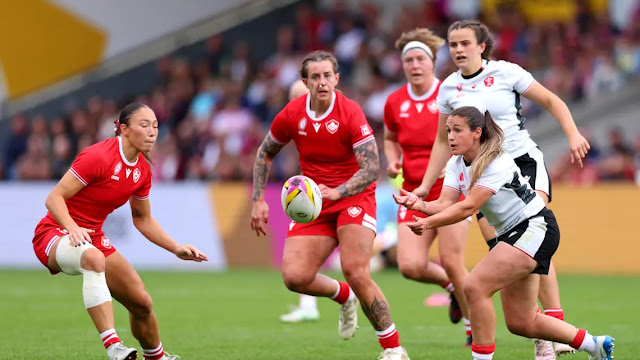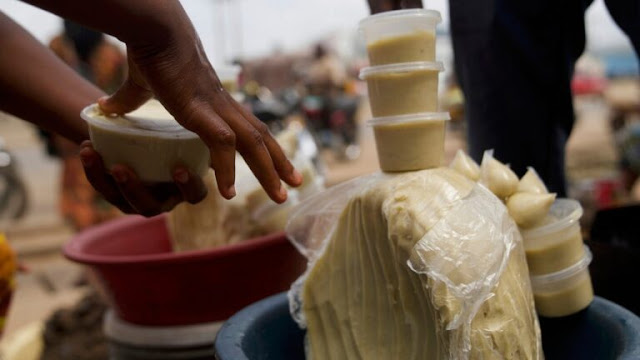In a commanding display of rugby prowess, Canada’s women’s rugby team delivered a resounding 42-0 bonus-point victory over Wales in their Women’s Rugby World Cup Pool B encounter in Salford on Saturday, August 30, 2025. The match, marked by Canada’s expansive and dynamic playing style, showcased their dominance in both attack and defense, securing their position as strong contenders for a quarterfinal berth. For Wales, the defeat compounded their struggles in the tournament, leaving them on the brink of a pool-stage exit after a challenging start to their campaign.
The match began with Wales showing early promise, putting Canada under pressure in the opening 15 minutes with a spirited and aggressive approach. Their forwards worked tirelessly to disrupt Canada’s rhythm, forcing the North Americans into a scrambling defensive effort. Wales’ early intensity was evident as they pushed into Canada’s half, testing the resolve of the 2014 World Cup silver medalists. However, Canada’s forwards soon found their footing, particularly at the set-piece, where their scrum and lineout began to assert control. This shift in momentum allowed Canada to transition from defense to attack, laying the foundation for what would become a relentless offensive onslaught.
Canada’s forward pack, led by props McKinley Hunt and Brittany Kassil, proved to be the cornerstone of their victory. Hunt was a standout performer, crossing the try line twice in a display of power and precision. Her first try came as a result of Canada’s increasing dominance at the scrum, where they began to overpower the Welsh pack. The Canadian forwards’ ability to secure clean ball at the set-piece provided their backline with the platform to launch wave after wave of attacking plays. Kassil also made her mark, powering over for a try that further underlined Canada’s physical superiority in the tight exchanges.
In the backline, wings Alysha Corrigan and Asia Hogan-Rochester added flair and finishing to Canada’s attacking arsenal. Corrigan’s try was a testament to Canada’s ability to stretch the Welsh defense with quick, expansive play. Her speed and agility allowed her to exploit gaps on the flanks, capitalizing on the space created by Canada’s forwards. Hogan-Rochester, equally clinical, showcased her finishing ability with a well-taken try, further highlighting the depth and versatility of Canada’s backline. Flyhalf Taylor Perry also contributed to the scoreboard, crossing for a try that demonstrated her ability to read the game and insert herself into attacking moves at the right moment.
One of the standout performers of the match was lock Sophie de Goede, whose perfect kicking display off the tee ensured that Canada maximized their scoring opportunities. De Goede converted all six tries, adding crucial points that underscored Canada’s clinical approach. Her composure under pressure and accuracy with the boot were pivotal in maintaining Canada’s momentum and building an unassailable lead. De Goede’s performance was not limited to her kicking, as she also played a key role in the lineout and contributed to Canada’s dominance in the loose, where her work rate and physicality helped disrupt Wales’ attempts to regain control.
Wales, to their credit, showed resilience in the second half, managing to string together several promising phases of play. They made repeated entries into Canada’s 22-meter zone, threatening to breach the Canadian defensive line. However, each time they came close, they were met with stout resistance. Canada’s defense, characterized by aggressive tackling and disciplined organization, held firm, denying Wales any points. On several occasions, Wales’ attacking forays were undone by handling errors or poor decision-making, which prevented them from capitalizing on their territorial gains. These mistakes proved costly, as Canada’s ability to absorb pressure and counterattack kept Wales pinned back for much of the game.
The set-piece battle was a defining factor in the match. Canada’s scrum, anchored by Hunt and Kassil, consistently put Wales under pressure, winning penalties and turnovers that allowed Canada to maintain possession and territory. The lineout, too, was a source of strength for Canada, with de Goede and her fellow forwards securing clean ball and disrupting Wales’ throws. This dominance at the set-piece not only provided Canada with attacking opportunities but also sapped the confidence of the Welsh pack, which struggled to match Canada’s physicality as the game progressed.
Canada’s expansive style was a key feature of their performance. Rather than relying solely on their forward power, they played with width and ambition, moving the ball quickly through the hands to exploit gaps in the Welsh defense. The interplay between the forwards and backs was seamless, with players like Corrigan and Hogan-Rochester thriving in the open spaces created by their teammates. This attacking philosophy was a stark contrast to Wales’ more conservative approach, which, while effective in the early stages, lacked the cutting edge needed to break through Canada’s defense.
The 42-0 scoreline was a fair reflection of Canada’s dominance, but it also highlighted the gap in class between the two sides. For Canada, the bonus-point victory was a statement of intent, signaling their ambition to go deep in the tournament. With 10 points from their two Pool B matches, Canada is now well-positioned to secure a top-two finish in the group, which would guarantee them a place in the quarterfinals. Their performance in Salford built on the momentum from their earlier pool match, reinforcing their credentials as one of the tournament’s leading teams.
For Wales, the defeat was a bitter pill to swallow. Already reeling from a 38-8 loss to Scotland in their opening match, Wales now face the very real prospect of an early exit from the tournament. Their inability to convert promising attacking opportunities into points, combined with their struggles at the set-piece, exposed the challenges they face against top-tier opposition. The outcome of Scotland’s match against Fiji later on Saturday could confirm Wales’ elimination from the pool stage, marking a disappointing campaign for a team that had hoped to make a stronger impression.
The broader context of the match adds further significance to Canada’s victory. As the 2014 World Cup silver medalists, Canada has a proud history in the competition, and their performance against Wales suggests they are rediscovering the form that made them a force in women’s rugby. The team’s blend of physicality, skill, and tactical nous makes them a formidable opponent, and their ability to execute an expansive game plan while maintaining defensive solidity bodes well for their chances in the knockout stages.
For Wales, the match highlighted areas for improvement, particularly in their set-piece execution and attacking efficiency. While they showed flashes of potential, particularly in the second half, their inability to maintain consistency and capitalize on opportunities ultimately cost them. The Welsh coaching staff will no doubt use this match as a learning opportunity, with an eye toward building a more competitive team for future tournaments.
In conclusion, Canada’s 42-0 victory over Wales was a masterclass in modern rugby, combining forward dominance, expansive backline play, and clinical finishing. Alysha Corrigan, Asia Hogan-Rochester, McKinley Hunt, Brittany Kassil, Taylor Perry, and Sophie de Goede were among the standout performers, each contributing to a comprehensive team effort. Wales, despite their early promise, were unable to match Canada’s intensity and precision, and now face an uphill battle to remain in the tournament. As Canada looks ahead to the quarterfinals, their performance in Salford will serve as a warning to their rivals that they are a team to be reckoned with in the 2025 Women’s Rugby World Cup.






